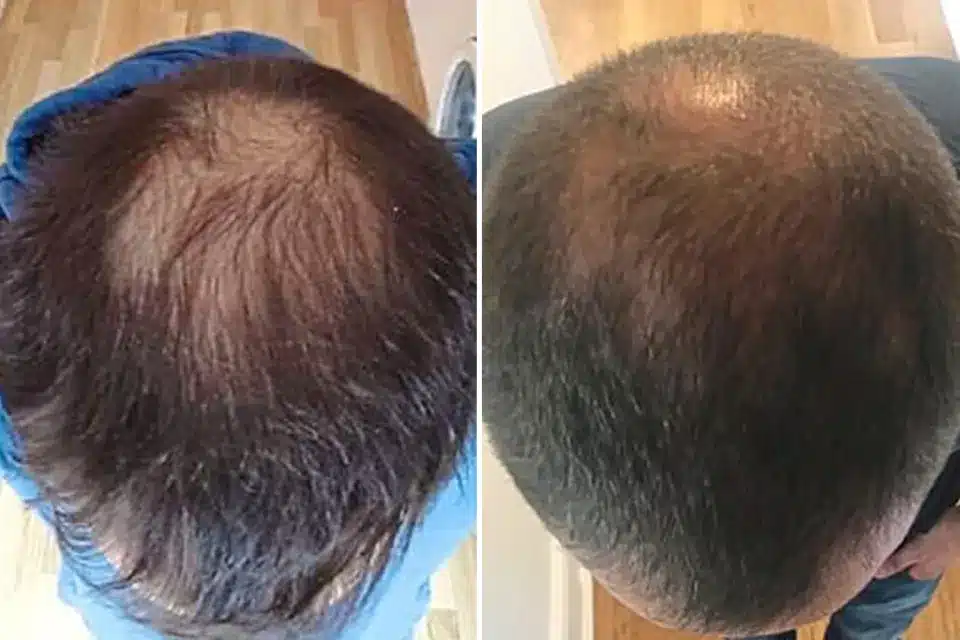WaterLipo Safety and Efficacy
FDA Approval
Water-assisted liposuction, or WaterLipo, utilizing local anesthetic and infiltration technologies, has received FDA approval for its work, marking it as a safe alternative to traditional liposuction techniques. Its safety record stands out, with fewer complications reported.
The procedure uses a gentle stream of water, after local anesthetic infiltration, to dislodge fat cells and work as an operative treatment. This operative treatment method reduces the risk of damage and infiltration to surrounding tissues in the work area. Patients experience less bruising and swelling post-operation.
Precision Technique
WaterLipo’s precision in targeting fat cells is unmatched. It allows surgeons to sculpt the body with minimal impact on surrounding areas.
This technique ensures that only fat cells are removed. Surrounding tissues like nerves and blood vessels remain intact. This precision leads to a smoother recovery process for patients.
Patient Satisfaction
Statistics show high patient satisfaction rates with WaterLipo. Successful outcomes are common in work groups, with many reporting improved body contours.
A survey revealed that over 90% of patients were pleased with their results. They appreciated the reduced pain and quicker recovery times compared to traditional liposuction methods.
WaterLipo vs Laser Liposuction
Invasiveness Level
Water-assisted liposuction (WAL) stands out for its gentle approach to fat removal. Unlike laser liposuction, WAL uses a stream of water to dislodge fat cells, minimizing damage to surrounding tissues. This results in less trauma and bruising.
Laser liposuction, however, relies on thermal energy to melt fat before extraction. It can cause more tissue damage due to the heat involved. Patients often report more discomfort during the healing process.
Recovery Time
Recovery from WAL is notably quicker. Patients typically return to daily activities within days. The reduced tissue trauma contributes to this faster recovery period.
In contrast, the recovery from laser liposuction can extend over a week or more. The additional discomfort and swelling from the heat used in this method prolong the healing process.
Long-Term Results
Both procedures offer effective fat removal, but their long-term effects on skin tightening differ. WAL focuses purely on removing fat with minimal impact on skin elasticity. Some patients may require additional treatments for skin tightening.
Laser liposuction has an added benefit of promoting collagen production due to the heat applied. This can result in tighter skin post-procedure. However, it’s important for patients to weigh this against the increased risk of tissue damage and longer recovery time.
WaterLipo Procedure Explained
Initial Consultation
The journey to a sculpted body begins with an initial consultation. Here, doctors assess the patient’s health and discuss goals. They explain how WaterLipo stands out from other methods like laser liposuction.
Patients receive guidance on preparing for the day of the procedure. This preparation ensures optimal results and a smooth recovery.
Procedure Steps
On the day of WaterLipo, patients experience a minimally invasive process. It starts with administering local anesthesia. This step is crucial for comfort without the risks associated with general anesthesia.
Next, surgeons use a specialized water jet device. It targets fat deposits directly, dislodging them gently. The water jet technology is key here. It breaks up fat cells with minimal damage to surrounding tissues.
Surgeons then suction out the loosened fat cells. The precision of this method allows for detailed body contouring.
Recovery and Results
Post-procedure, patients often report minimal discomfort. Thanks to the gentle nature of water-assisted liposuction, recovery times are shorter compared to traditional methods.
Results become visible as swelling subsides. Patients can expect to see a more defined physique within weeks, with continuous improvement over months.
Recovery After WaterLipo
Recovery Timeline
Recovery time after WaterLipo is generally shorter compared to traditional liposuction methods. Most patients can return to work within a few days, often ranging from 2 to 5 days post-procedure. Normal activities can usually resume after two weeks. It’s crucial, however, to follow the specific timeline your surgeon recommends for the best outcome.
Swelling Management
Post-procedure swelling and bruising are common but manageable. Wearing compression garments as advised by your surgeon helps reduce swelling effectively. They should be worn for about three to six weeks for optimal results. Gentle walking is encouraged to improve circulation and facilitate healing.
Importance of Aftercare
Following your surgeon’s aftercare instructions is vital for optimal healing and results. This includes attending all follow-up appointments, taking prescribed medications, and avoiding strenuous activities until cleared by your healthcare provider. Adhering to these guidelines not only ensures a smoother recovery but also maximizes the benefits of WaterLipo.

Addressing Loose Skin Concerns
Gentle Approach
Water-assisted liposuction, or WaterLipo, uses a gentle water stream to dislodge fat. This method is less traumatic than traditional liposuction techniques.
Patients often worry about loose skin after fat removal. However, WaterLipo’s gentle approach significantly reduces this risk. The water stream helps preserve the skin’s natural elasticity. Thus, patients experience minimal sagging post-procedure.
Skin Tightening
Combining WaterLipo with skin tightening treatments offers enhanced results.
For those concerned about skin laxity, local skin tightening options can complement WaterLipo. These treatments stimulate collagen production, improving skin texture and firmness. Together, they provide comprehensive body contouring solutions.
Case Studies
Several patient case studies highlight the effectiveness of WaterLipo in addressing loose skin concerns.
One case involved a 45-year-old woman worried about sagging skin after fat removal. She underwent WaterLipo followed by a local radiofrequency treatment. Six months later, her skin appeared tighter and more contoured than ever before.
Another example is a 35-year-old man focusing on his abdomen area. Post-WaterLipo, he opted for ultrasound-based skin tightening. His results showed significant improvement in both fat reduction and skin resilience.
Cellulite and Fat Reuse Strategies
Fat Smoothing
WaterLipo, a revolutionary technology, targets fat cells directly. It uses a gentle water jet to break up and remove unwanted fat layers. This process can significantly smooth out the appearance of cellulite. Unlike traditional methods that may leave uneven areas, WaterLipo ensures a more uniform layer of remaining fat cells.
Patients often notice an improvement in their skin’s texture. The targeted approach of WaterLipo minimizes damage to surrounding tissues, promoting faster recovery.
Fat Transfer
After WaterLipo, the harvested fat cells can find new purpose. They can be transferred to areas like buttocks or breasts, enhancing contours naturally. This fat reuse strategy offers dual benefits: reducing unwanted fat and augmenting other body parts without synthetic implants.
The feasibility of such procedures has been well-documented. Studies show that transferred fat cells can thrive in their new location, providing long-lasting volume enhancement.
Evidence Support
Recent studies underscore the effectiveness of WaterLipo combined with fat transfer techniques. One study highlighted significant improvements in body contouring outcomes for participants undergoing these procedures.
These findings suggest that not only does WaterLipo offer a solution for cellulite but also opens doors for innovative fat reuse strategies. Patients achieve smoother skin and enhanced body shapes through a single intervention.
Cost and Anesthesia Options
Cost Factors
Determining the cost of WaterLipo involves several components. The procedural fees are at the forefront, varying based on the number and size of areas treated. Anesthesia costs also play a significant role, alongside any additional treatments that might be necessary to achieve desired results.
Water-assisted liposuction often proves more cost-effective than traditional methods. This is due to its efficiency in removing fat and reducing operative time. Patients also tend to require fewer follow-up treatments, leading to overall savings.
Anesthesia Types
When it comes to ensuring patient comfort during WaterLipo, anesthesia is key. Local anesthesia allows patients to remain awake without feeling pain, making it a popular choice for smaller areas. It significantly reduces recovery time, allowing most individuals to return to daily activities within days.
For larger areas or groups desiring more comprehensive treatment, general anesthesia might be necessary. This option ensures that patients are completely asleep during the procedure, offering comfort for those who may feel anxious about the process.
Benefits for Body Contouring
Minimal Downtime
Water-assisted liposuction (WaterLipo) stands out for its reduced recovery time. Unlike traditional methods that may require weeks of downtime, patients often return to their daily activities much quicker with WaterLipo. This benefit is particularly attractive for those who lead busy lives and cannot afford long periods of rest.
Patients report feeling comfortable resuming work within a few days post-procedure. This efficiency does not compromise the quality of results but enhances patient satisfaction by minimizing disruption to their routines.
Precise Fat Removal
The precision of WaterLipo in targeting fat cells is unparalleled. It allows surgeons to sculpt the body with remarkable accuracy, especially in areas that are difficult to address with conventional liposuction techniques.
This method proves beneficial for treating delicate regions such as the neck and arms, where precision is crucial. The ability to finely tune the process leads to more natural-looking outcomes, making WaterLipo a preferred choice for those seeking subtle yet effective body contouring.
Lower Complications
One significant advantage of WaterLipo is the lower risk of complications compared to traditional liposuction procedures. The gentler approach reduces the likelihood of bruising and swelling, contributing to a smoother recovery process.
Moreover, the water jet technology minimizes tissue trauma, further decreasing potential risks. These safety features make WaterLipo an appealing option for patients concerned about the possible side effects of surgery.
Closing Thoughts
Water-assisted liposuction, or WaterLipo, stands out as a cutting-edge solution for those seeking body contouring with minimal downtime and discomfort. Through comparing it with traditional methods like laser liposuction, detailing the procedure, recovery process, addressing skin concerns, and exploring cost and benefits, we’ve aimed to provide a comprehensive look at how WaterLipo could be your ally in achieving desired aesthetic goals. Its safety, efficacy, and added advantages for body contouring make it a compelling option worth considering.
Remember, the journey to your ideal body shape is personal and requires careful thought. Armed with this information, you’re better positioned to make an informed choice that aligns with your health, aesthetic desires, and lifestyle. If WaterLipo sounds like the right fit for you, take the next step by consulting with a qualified professional to discuss your options. Your path to confidence through body contouring begins here.
Frequently Asked Questions
How safe is WaterLipo compared to traditional liposuction methods?
WaterLipo is considered safer due to its minimally invasive nature, reducing risks associated with surgery and anesthesia. It uses water pressure, minimizing tissue damage and promoting quicker recovery.
What makes WaterLipo different from laser liposuction?
Unlike laser liposuction that uses heat, WaterLipo uses a gentle water jet to dislodge fat. This results in less bruising and swelling, offering a more comfortable recovery period.
Can you explain the WaterLipo procedure?
The procedure involves using a thin tube to deliver a pressurized stream of saline solution to break up fat cells, which are then suctioned out. This process is gentle on the body, allowing for precise body contouring with minimal downtime.
What is the recovery time for WaterLipo?
Recovery after WaterLipo is typically quick, with most patients returning to normal activities within a few days. The gentler approach reduces recovery time compared to traditional liposuction.
How does WaterLipo address loose skin concerns?
WaterLipo can stimulate collagen production due to the gentle movement of the cannula under the skin, potentially tightening the skin post-procedure. However, significant skin laxity might require additional treatments.
Are there any strategies for using removed fat from WaterLipo?
Yes, the fat removed during WaterLipo can be purified and reused for natural augmentation procedures such as Brazilian Butt Lifts or facial rejuvenation, offering a dual benefit from one procedure.
What are the costs and anesthesia options for WaterLipo?
Costs vary based on treatment areas but are generally competitive with other liposuction techniques. Local anesthesia is commonly used, making it less risky and more cost-effective than general anesthesia options.











